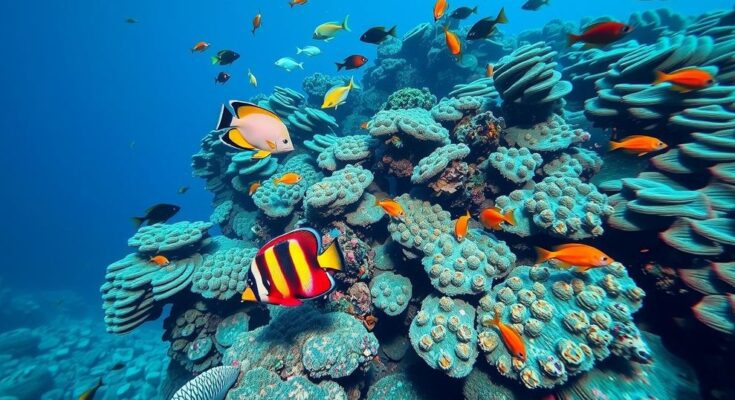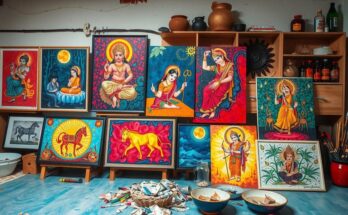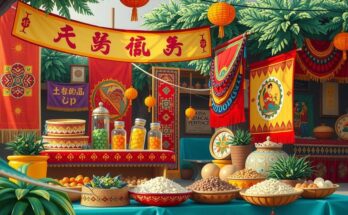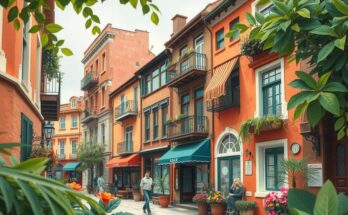Nestled in the azure expanse of the Pacific, Palau beckons travellers not just with its breathtaking dive spots, but with an enticing cultural tapestry waiting to be explored. Renowned for its iconic mushroom-shaped Rock Islands, the island nation is drawing visitors eager to experience its vibrant land-based heritage, rather than solely its aquatic wonders. Recent statistics highlight this shift; tourist numbers have surged from a mere 5,000 in 2021 to over 50,000 in 2024, largely buoyed by Chinese tourists despite ongoing diplomatic challenges.
Upon arrival, it becomes clear that Palau is keen to share its history and traditions. Sean Tekriu, who greets guests at the stunning Badrulchau Stone Monoliths, reflects this sentiment, stating, “We’ve been known for our crystal clear water, but there’s more to see.” Through village tours and local handicraft workshops, visitors are invited to immerse themselves in the essence of Palauan life alongside its famous marine ecosystems.
This archipelago, consisting of over 300 islands, offers direct flights from various locations, including Guam and Australia. While famed for its marine biodiversity—housing 1,500 fish species amid 400 hard corals—Palauans remain staunch guardians of their underwater treasures. Nearly 80% of these waters are protected, reflecting a deep commitment to conservation that begins with the signing of the “Palau Pledge” upon entry to the country.
Diving enthusiasts flock to explore historic shipwrecks like the Iro Maru, a colossal remnant now teeming with exotic marine life. Meanwhile, snorkelers find solace at spots like Ngemelis Wall, where vivid fish glide through crystal blue waters beside the shadow of a lurking nurse shark. The beauty is sometimes disrupted, such as when a Titan Triggerfish took a nibble out of my knee—a reminder of the ocean’s playful, yet fierce nature.
Cultural immersion is alive at the Tebang Woodcarving Shop, where artisans carve narrative storyboards detailing Palauan legends. McMichael Mutok Jr. passionately explains these tales; one depicts a magical tree submerged due to jealousy, offering glimpses into the rich oral history. The Etpison Museum unveils Micronesian artefacts, including the remarkable Yapese stone currency, while the Belau National Museum showcases cherished customs and rituals integral to Palauan life.
The 680 Night Market is a lively hub where visitors can indulge in local cuisine and crafts, celebrating culture through music and traditional dance against the backdrop of the Japan-Palau Friendship Bridge. As the sun dips below the horizon, the picturesque views from the bridge connect the commercial energy of Koror with the tranquil beauty of Babeldaob.
Adventurers can navigate Babeldaob Island’s rugged trails to discover the awe-inspiring Ngardmau waterfall or explore the historical remnants of WWII Japanese outposts. The serene Badrulchau Stone Monoliths beckon history buffs, with their ancient columns whispering stories of gods and legends, inviting contemplation on their enigmatic past.
Ultimately, Mutok Jr. envisions a future where sharing Palauan heritage through tourism elevates its international profile, drawing parallels with iconic sites like Easter Island. “For tourists to come and learn about our history and people, that’s what’s important to us,” he asserts, indicating a profound desire to preserve and share the island’s dynamic story.
Palau, known for its diving spots, is encouraging visitors to discover its cultural heritage as tourism rebounds post-pandemic. With a significant increase in visitor numbers, the focus is shifting towards land-based attractions, traditional handicrafts, and storytelling. Local artisans share their history through workshops and exhibitions, while environmental conservation remains a top priority. Ultimately, Palau seeks to elevate its profile by highlighting its unique traditions.
Palau is transitioning from a diving paradise to a cultural haven, inviting travellers to explore its rich heritage alongside its celebrated marine life. With visitor numbers on the rise, the island is embracing its history through various cultural activities. Efforts like the Palau Pledge underscore a commitment to environmental preservation, while local artisans and story-telling illuminate the island’s vibrant traditions. Palau is positioning itself as a destination where natural beauty and cultural depth intertwine, promising a captivating experience for all visitors.
Original Source: www.mymotherlode.com



